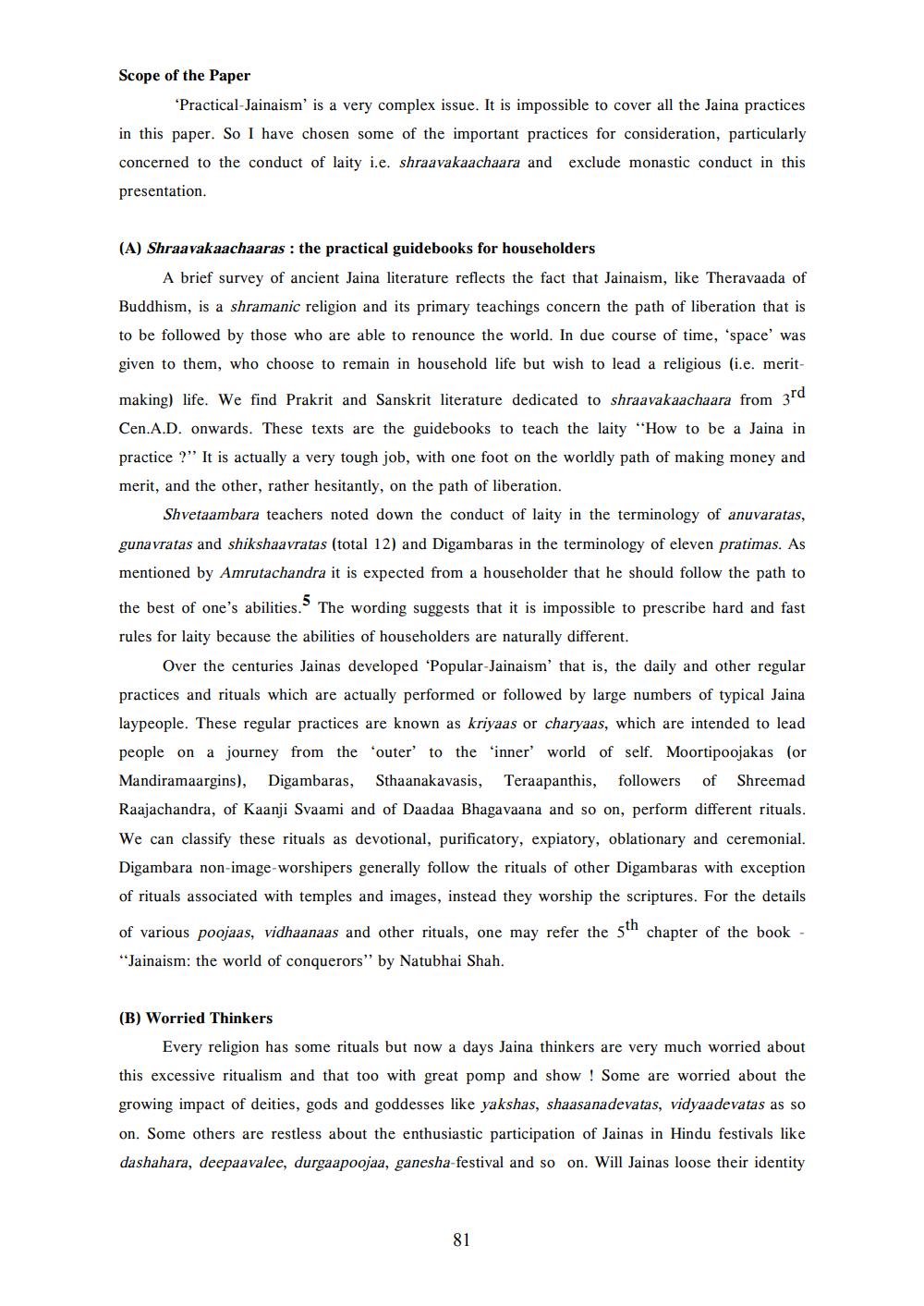________________
Scope of the Paper
'Practical-Jainaism' is a very complex issue. It is impossible to cover all the Jaina practices in this paper. So I have chosen some of the important practices for consideration, particularly concerned to the conduct of laity i.e. shraavakaachaara and exclude monastic conduct in this presentation
(A) Shraavakaachaaras : the practical guidebooks for householders
A brief survey of ancient Jaina literature reflects the fact that Jainaism, like Theravaada of Buddhism, is a shramanic religion and its primary teachings concern the path of liberation that is to be followed by those who are able to renounce the world. In due course of time, 'space' was given to them, who choose to remain in household life but wish to lead a religious (i.e. merit
making) life. We find Prakrit and Sanskrit literature dedicated to shraavakaachaara from 3rd Cen.A.D. onwards. These texts are the guidebooks to teach the laity “How to be a Jaina in practice ?" It is actually a very tough job, with one foot on the worldly path of making money and merit, and the other, rather hesitantly, on the path of liberation.
Shvetaambara teachers noted down the conduct of laity in the terminology of anuvaratas, gunavratas and shikshaavratas (total 12) and Digambaras in the terminology of eleven pratimas. As mentioned by Amrutachandra it is expected from a householder that he should follow the path to
the best of one's abilities. The wording suggests that it is impossible to prescribe hard and fast rules for laity because the abilities of householders are naturally different.
Over the centuries Jainas developed 'Popular-Jainaism' that is, the daily and other regular practices and rituals which are actually performed or followed by large numbers of typical Jaina laypeople. These regular practices are known as kriyaas or charyaas, which are intended to lead people on a journey from the 'outer' to the inner' world of self. Moortipoojakas (or Mandiramaargins), Digambaras, Sthaanakavasis, Teraapanthis, followers of Shreemad Raajachandra, of Kaanji Svaami and of Daadaa Bhagavaana and so on, perform different rituals. We can classify these rituals as devotional, purificatory, expiatory, oblationary and ceremonial. Digambara non-image-worshipers generally follow the rituals of other Digambaras with exception of rituals associated with temples and images, instead they worship the scriptures. For the details
of various poojaas, vidhaanaas and other rituals, one may refer the 5th chapter of the book - "Jainaism: the world of conquerors" by Natubhai Shah.
(B) Worried Thinkers
Every religion has some rituals but now a days Jaina thinkers are very much worried about this excessive ritualism and that too with great pomp and show ! Some are worried about the growing impact of deities, gods and goddesses like yakshas, shaasanadevatas, vidyaadevatas as so on. Some others are restless about the enthusiastic participation of Jainas in Hindu festivals like dashahara, deepaavalee, durgaapoojaa, ganesha-festival and so on. Will Jainas loose their identity




